Sharp X68000
The Sharp X68000, often referred to as the X68k, was a PC released only for Japan by Sharp Corporation
The first model was released in 1987, with a 10 MHz Motorola 68000 CPU, 1 MB of RAM and no hard drive
The last model was released in 1993 with a 25 MHz Motorola 68030 CPU, 4 MB of RAM, and an optional 80 MB SCSI hard drive
The RAM on these systems was expandable to 12 MB, although most games and applications did not require more than 2 MB

Description
The X68000 had one of the most spectacular hardware configurations at its launch, with features that seemed reserved only for arcades
To look for an equivalent we should approach the concept of Neo-Geo that appeared several years later
Internally it had chips from manufacturers as varied as Zilog, Motorola, Hitachi, NEC, Yamaha and Ricoh
The amount of possibilities of expansion was infinite
Even could not connect the pad of the Super Nintendo or Mega Drive to play Street Fighter II with a converter of Capcom
Was the machine used by Capcom for the development of its CPS
As you can imagine, the conversions of those games were especially reliable
So it had the best arcade conversions of Capcom and also of Konami
I used controllers compatible with MSX, so they could use their own MSX, those from FM Towns or those from Mega Drive with a slight modification, to name a few
Features
| Name | X68000 |
|---|---|
| Manufacturer | Sharp |
| Type | Personal Computer |
| Origen | Japan |
| Year | 1987 |
| Keyboard | Keyboard complete stroke |
| CPU | Motorola MC68000 |
| Speed | 10 MHz |
| Coprocesador | Unknown |
| RAM | 1 MB (up to 12 MB) |
| VRAM | 512 KB for graphics + 512 KB for text |
| ROM | 1 MB |
| Text Modes | Unknown |
| Graphics modes | 256×240 / 256×256 / 512×240 / 512×256 / 512×512 / 640×480 / 768×512 / 1024×1024 / 128 sprites (16×16 points) |
| Colors | 65535 (16 colors at 1024x1024 at 65K at 512x512) |
| Sound | FM sound (Yamaha 2151: 2-channel/8-octave stereo) + PCM (OKI MSM6258V: 4-bit mono) |
| I/O ports | Joystick (2), stereo audio I/O, TV control, NTSC video image I/O, expansion (2 slots), external FDD, SASI, RS232 |
| Integrated media | 2 x 5.25″ disk drive |
| SO | Human 68K 1.0 + VS |
| Peripheral | Power supply unit integrated |
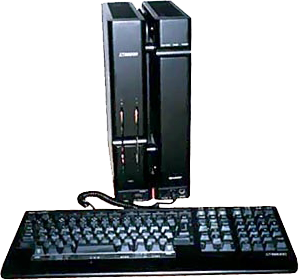
Operating system
The X68k ran an operating system developed for Sharp by Hudson, called Human68K, which featured commands very similar to those of MS-DOS (written in English)
Versions prior to 2.0 of the operating system allowed command line use only for the most common operations such as 'format' and 'switch', while later versions included form-based updates to those utilities, greatly improving its ease of use
At least three versions of the operating system were released, with several updates in between
Other operating systems were NetBSD for X68030 and OS-9
The first models had a GUI called “VS”
It was later packaged as SX-WINDOW (not to be confused with Microsoft Windows, whose interface was very different)
There was a third GUI called Ko-Windows; which was similar to Motif
These shells GUI could boot from a floppy or from the hard disk of the system
Most games also booted up and ran from a floppy disk
Some could be installed in the hard disk and other required
Since the system's release, the Human68k compiler sets, consoles and SX-Window C and BIOS ROMs have been released into the public domain and are available for free download
Design of the box
El X68000 presentaba dos disqueteras soft-eject de 5,25", o en algunos de los modelos compactos, dos disqueteras de 3,5" y con un diseño de estuche muy distinto con dos torres conectadas, dividido por un asa retráctil
This system was also one of the first to feature a software-controlled power switch; Pressing the switch signaled the system software to be saved and shut down, similar to the ATX design of modern PCs
The screen became black and the sound is silenced before the system is turned off
The keyboard, although poorly designed, had a mouse port built into both sides
The front of the computer had a headphone jack, volume control, joystick, keyboard and mouse ports
The top had a retractable handle for carrying (non-compact models only), a reset button, and a Non-Maskable Interrupt (NMI) button
The rear had a large number of ports, including stereo outputs, FDD and HDD expansion ports, and expansion slots for the I/O board
Screen
The display supported 15 and 31 kHz with up to 65,535 colors and functioned as a ready-made television (using the NTSC-J standard) with composite video input
It was an excellent screen to play with JAMMA compatible arcade boards due to its analog RGB input and low refresh time
Hard drives
Early machines used the rare Shugart Associates System Interface (SASI) as their hard drive interface
Later versions adopted the small computer system interface (SCSI) standard
Depending on hardware capacity, formatted SASI drives could be 10, 20, or 30 MB in size and also be logically partitioned
Floppy disks came in a couple of different formats, none of which could be read natively on other platforms, although there was software capable of reading and writing those disks on a PC running DOS or Windows 98
Expansions
Many expansion cards were released for the system, including networking (Neptune-X), SCSI, memory upgrades, CPU upgrades (JUPITER-X 68040/060 accelerator), and MIDI I/O boards
The system had two joystick ports, both 9-pin male, and supported joysticks Atari standard
Controllers MSX they worked natively and the Super NES controllers could be used in conjunction with the adapter that was included with Super Street Fighter 2
Other models
X68000 ACE/ACE HD (1988)
The X68000 Ace and Ace HD were the successors of the X68000 and had the same characteristics
Its only improvements were a new motherboard and a new version of the operating system (1.01)
Models prior to the X68000 series did not use the SCSI hard drive interface, but rather the Sharp interface derived from the Shugart Associates Systems Interface (SID) protocol released by Shugart associates in 1980
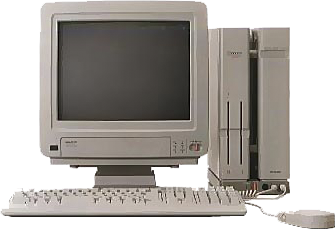
X68000 PRO (1989)
The X68000 Pro was the successor of the X68000 Ace and Ace HD
It used a new version of the operating system: Human 2.0 and a new GUI (SX Windows instead of VS)
It had 3 expansion slots instead of 2
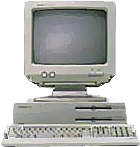
X68000 EXPERT (1989)
The X68000 Expert was the successor of the X68000 Ace and Ace HD
It had 2 MB of RAM
Was released at the same time than the X68000 Pro and seems to have the same features
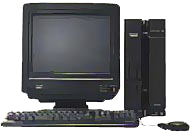
X68000 EXPERT II (1990)
The X68000 Expert II was the successor of the X68000 Expert
Was released at the same time than the X68000 Pro II and seems to have the same features
However, it had a new motherboard and the stereo audio port was removed
An X68000 Expert II HD (with hard drive) was also produced
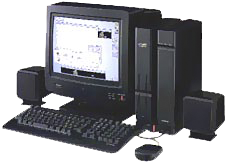
X68000 PRO II (1990)
The X68000 Pro II was the successor of the X68000 Pro
It used a new version of the OS: Human 2.01.
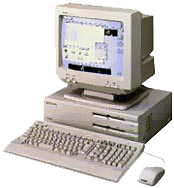
X68000 SUPER/SUPER HD (1990)
X68000 Super/Super HD was the successor to the X68000 Expert II and X68000 Pro II
Used the interface of SCSI hard disk in place of the SASI
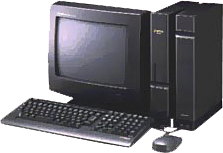
X68000 XVI (1991)
The X68000 XVI was the successor of the X68000 Super and Super HD
It had new features: 16 MHz instead of 10 MHz (although it could still be used at 10 MHz) and a new version of the operating system and its GUI
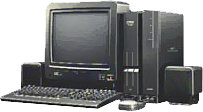
X68000 XVI Compact (1992)
The X68000 XVI Compact was the successor of the X68000 XVI
Running under a new version of the operating system and its GUI
La otra nueva característica fueron dos disqueteras 3" 1/2 en lugar de al clásica 5" 1/4 de la serie x68000
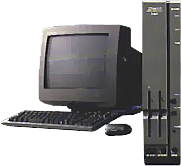
X68000 XVI Compact (1992)
The X68000 XVI Compact was the successor of the X68000 XVI
Running under a new version of the operating system and its GUI
La otra nueva característica fueron dos disqueteras 3" 1/2 en lugar de al clásica 5" 1/4 de la serie x68000

X68030/68030 Compact (1993)
The X68030 Pro was the successor of the X68000 XVI Compact
It was the last evolution of the series X68
Fue seguido por el X68030 Compact que usaba disquetes de 3.5" en lugar de los 5.25"
There were many hardware developments for this computer, notably an accelerator card based on the Motorola 68040 or 68060

Arcade games in the home
Their hardware was very similar to the hardware of the plates arcade of that era
Supported text RAM, graphics RAM and hardware sprites
The sound was produced internally via the FM synthesizer YM2151 Yamaha and the channel OKI MSM6258V of a single-channel PCM
Due to these and other similarities, it was the system of choice for conversions of many arcade games
Some of the games created for this system include Parodius Da!, Final Fight, Street Fighter 2, Daimakaimura – Ghouls'n Ghost, Akumajo Dracula (Castlevania, later released on the Sony PlayStation as Castlevania Chronicles), Bomberman, AfterBurner, R-Type, Strider and many more
Many games also supported Roland SC-55 and MT-32 MIDI sound modules, as well as mixed mode with internal/external output
